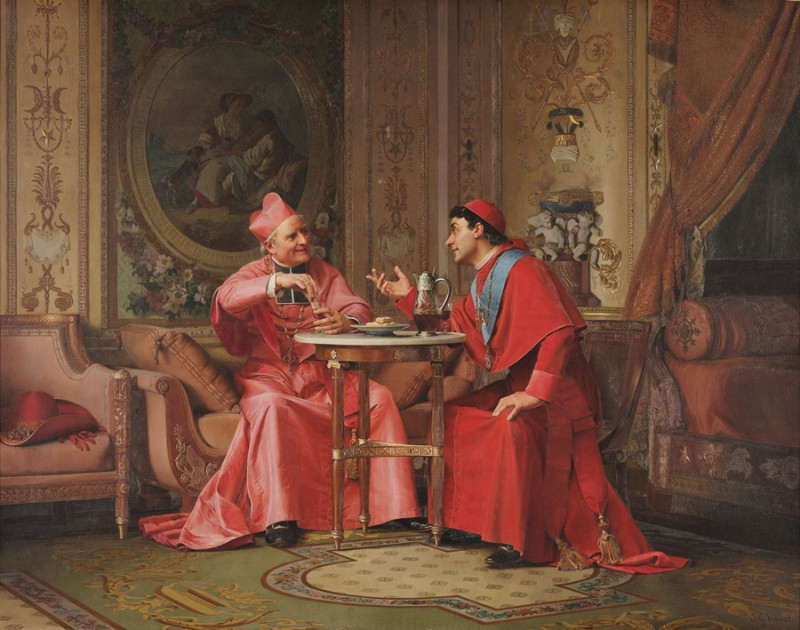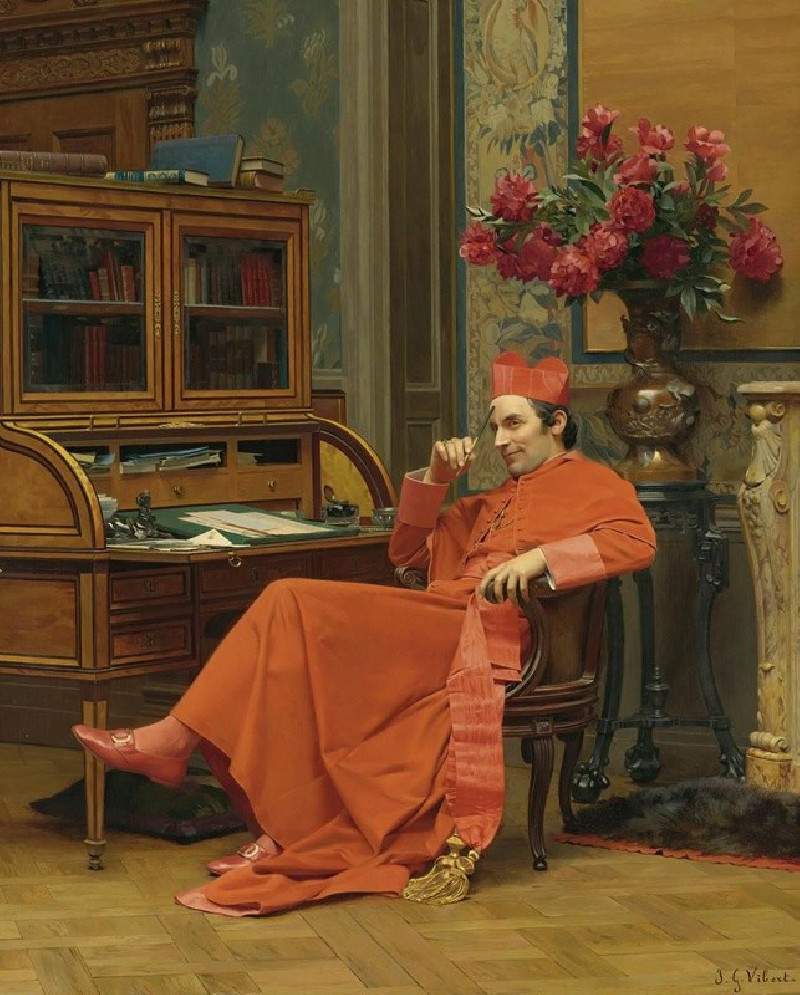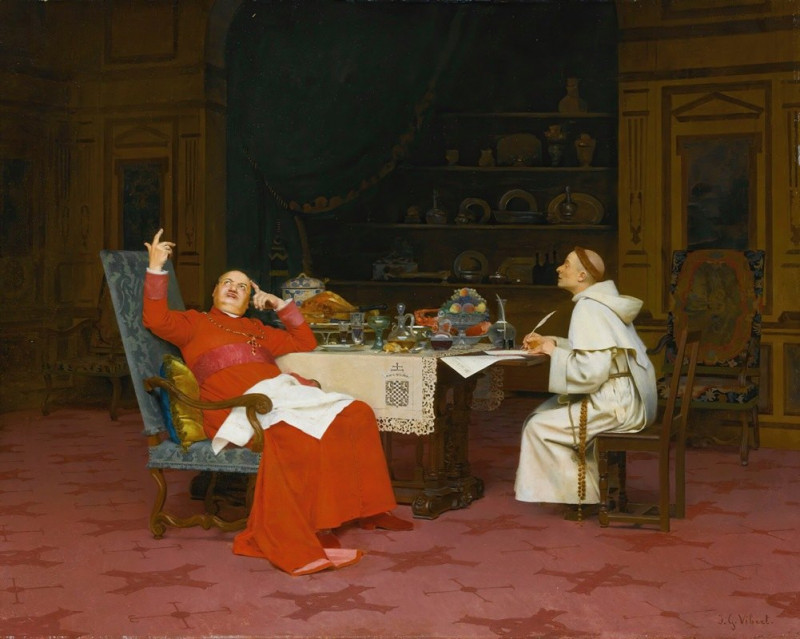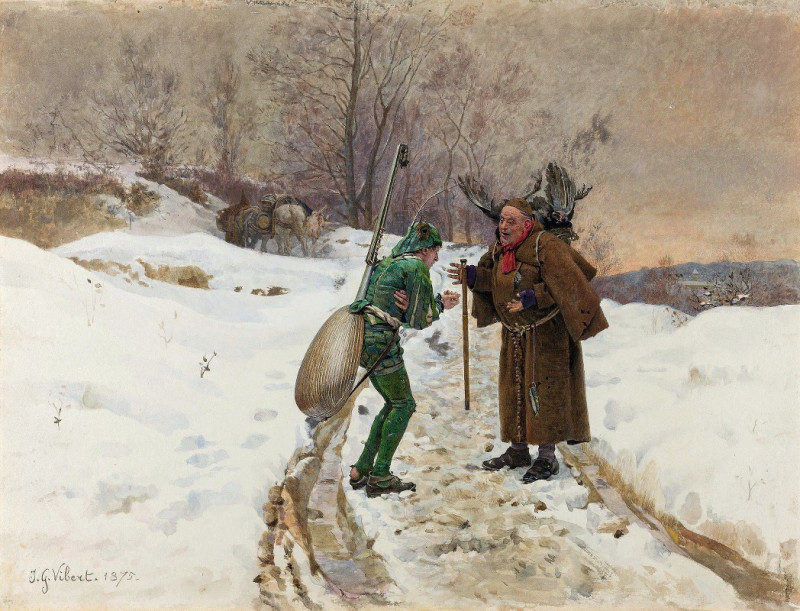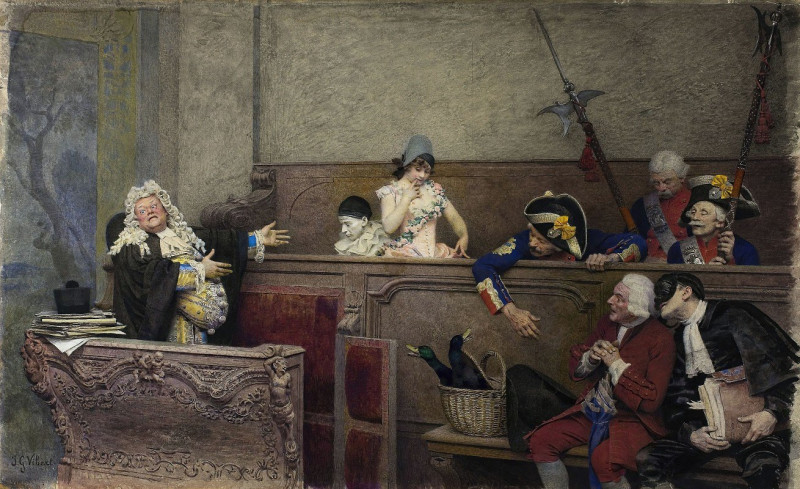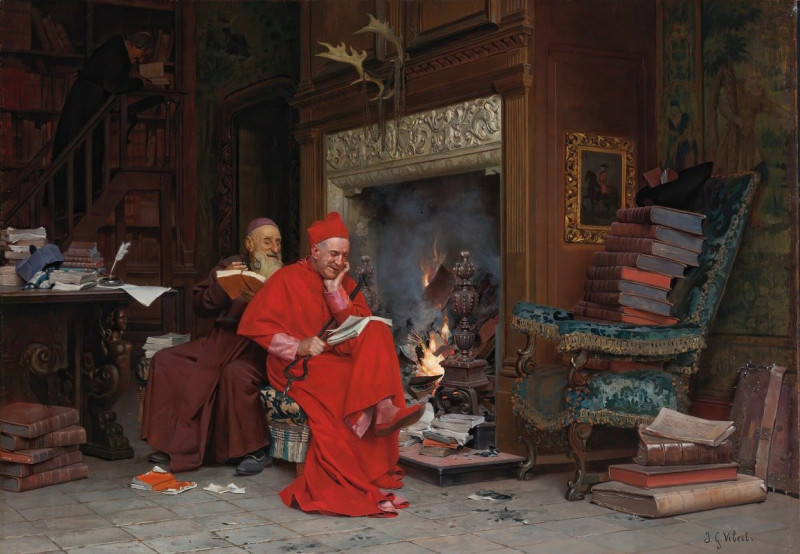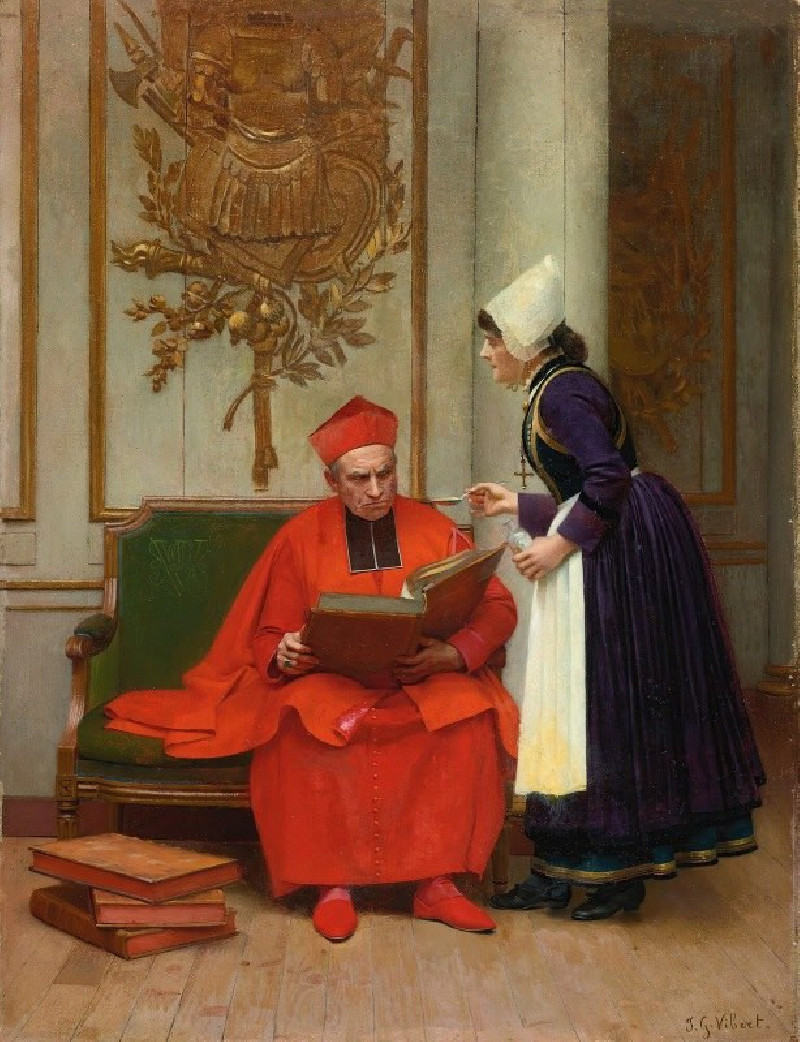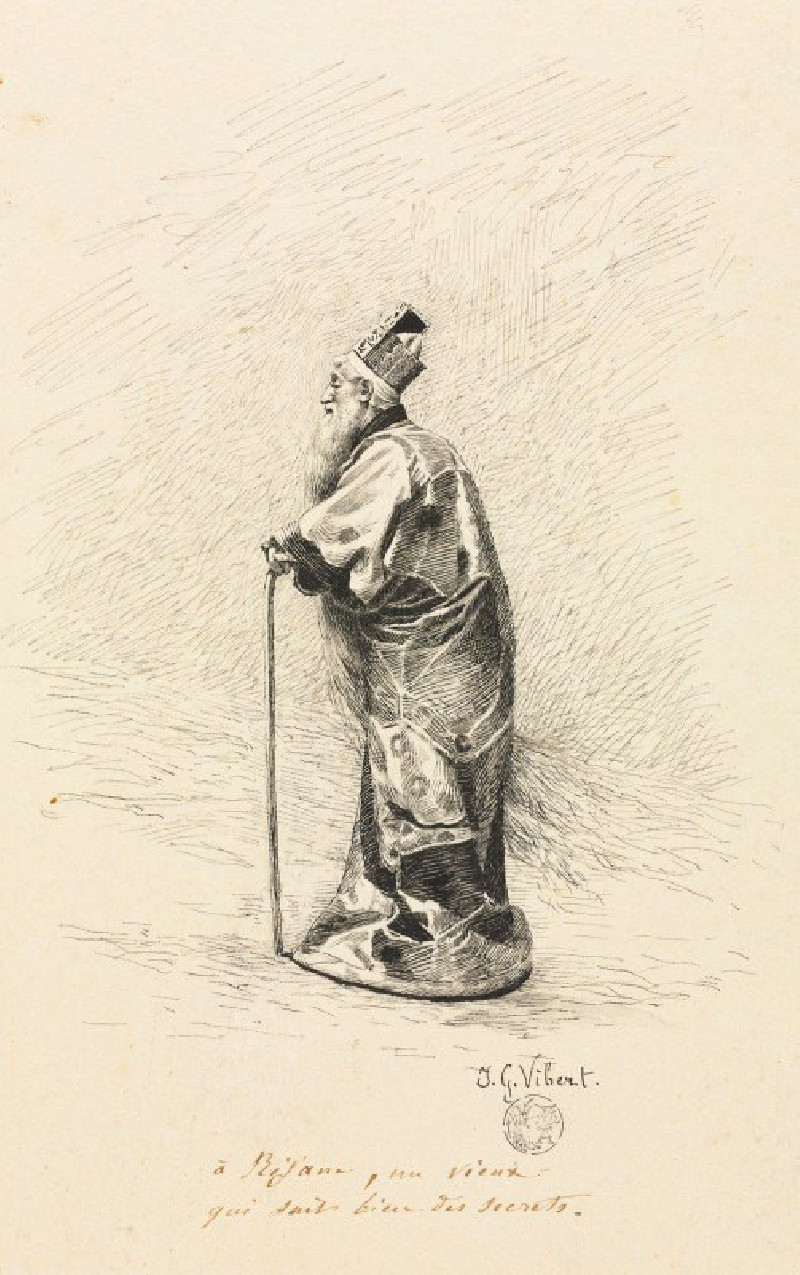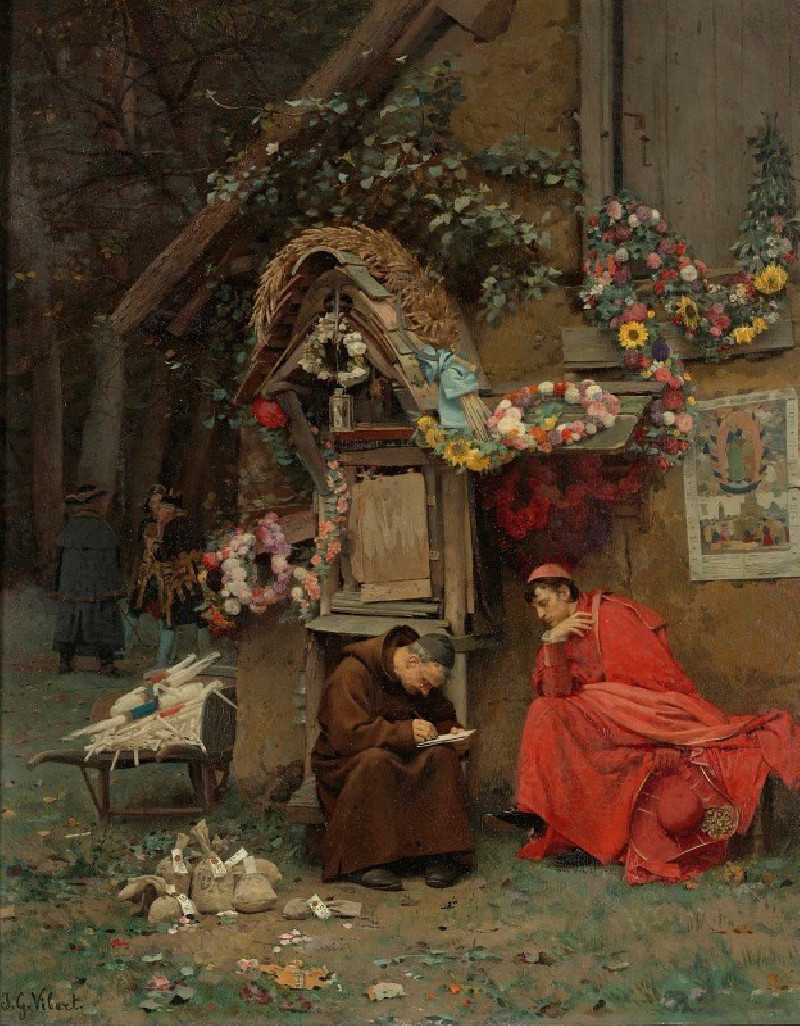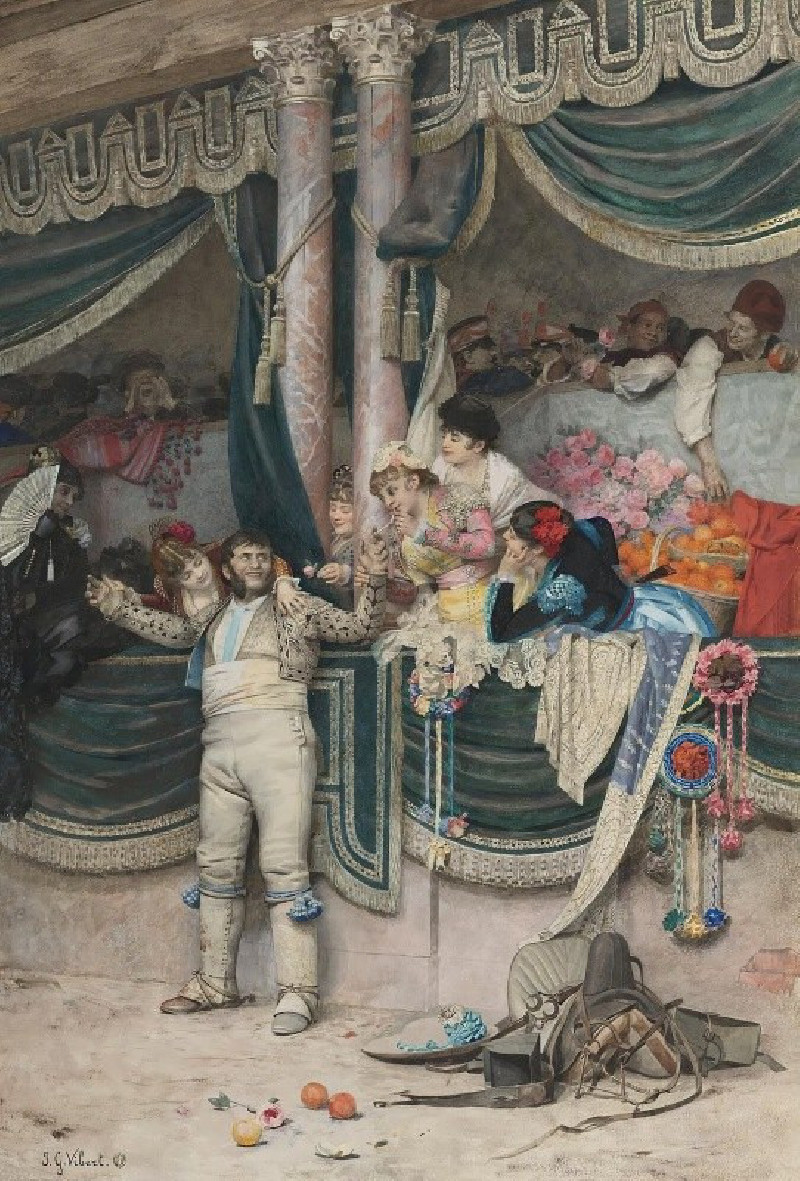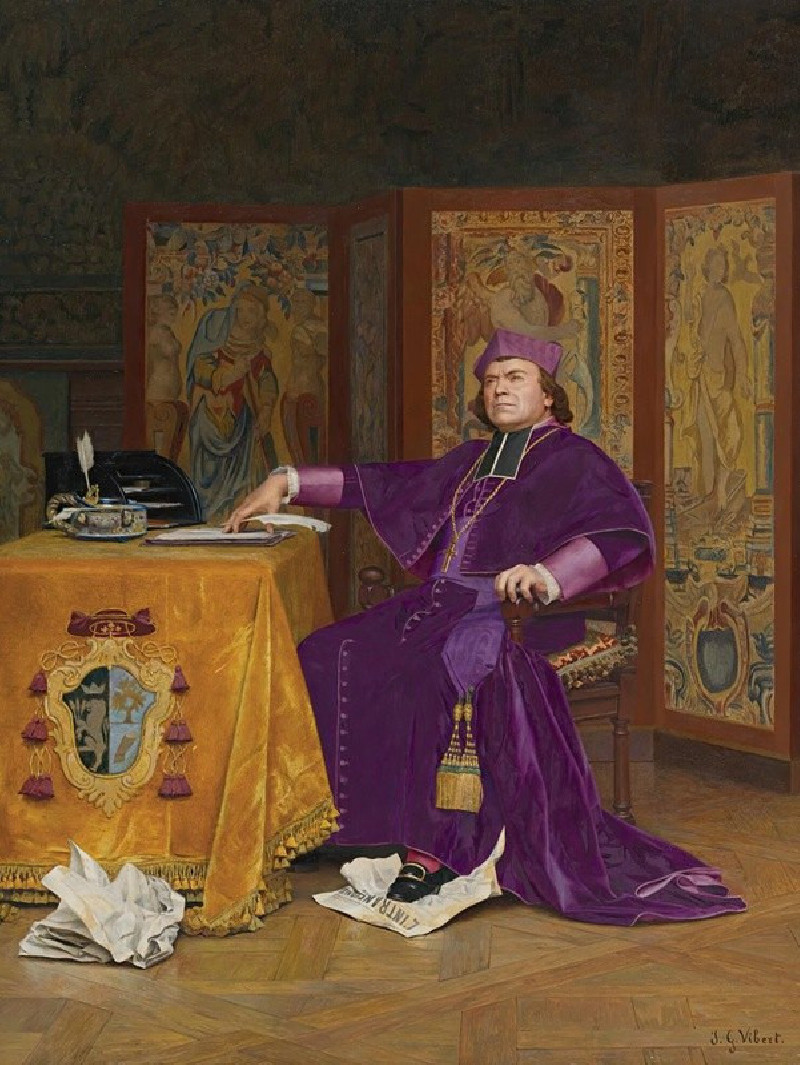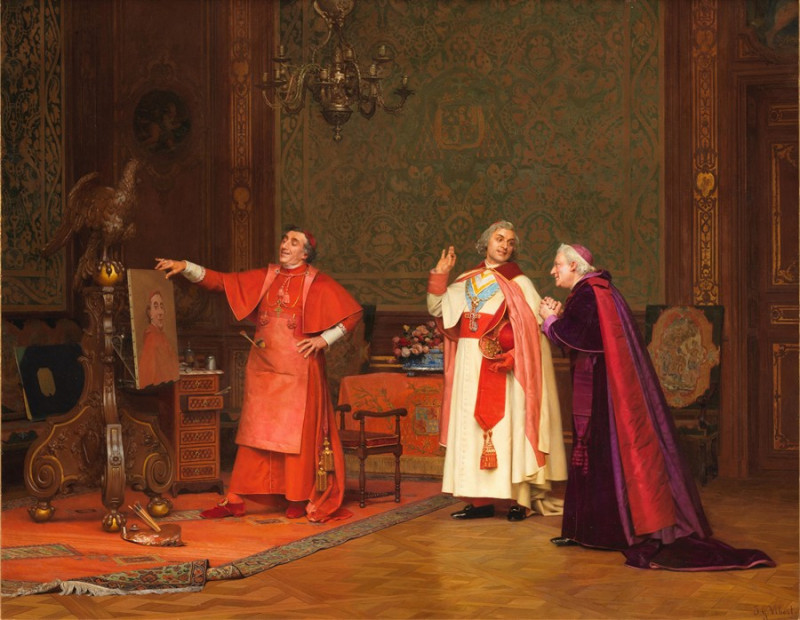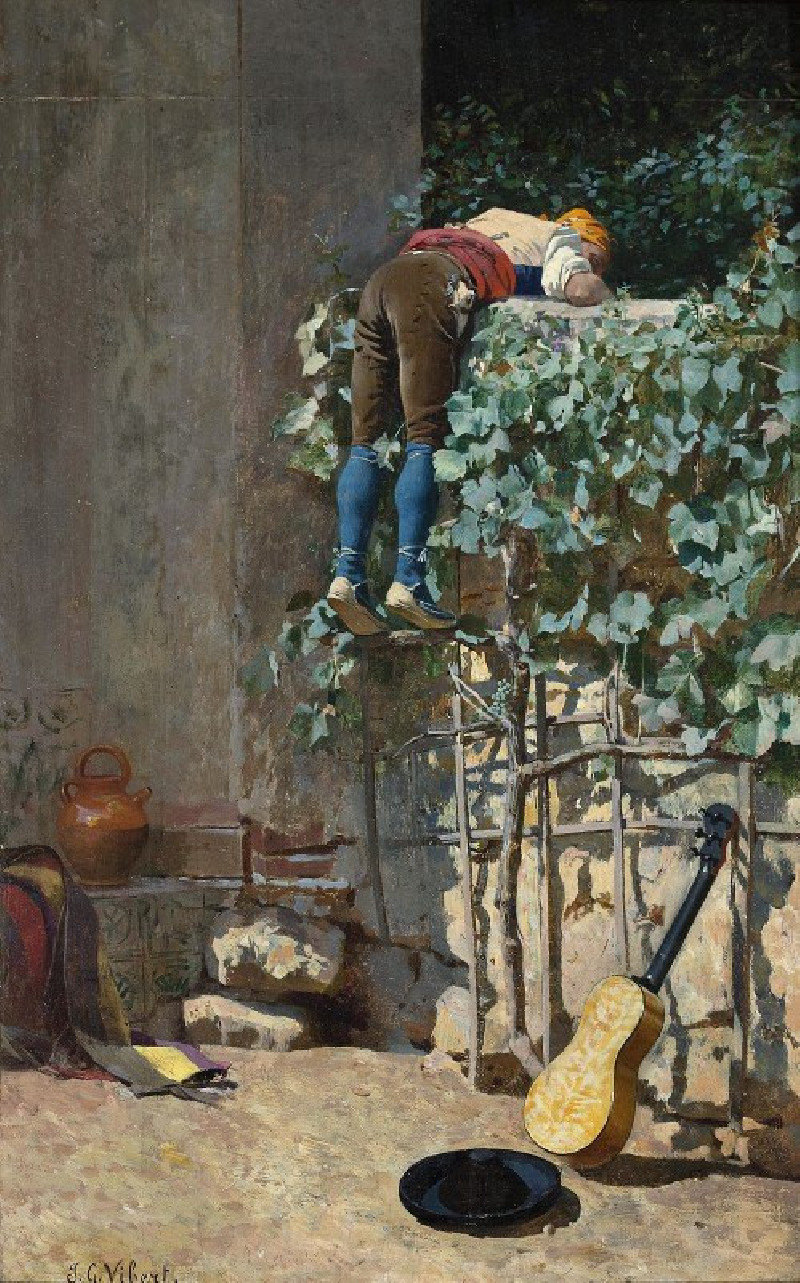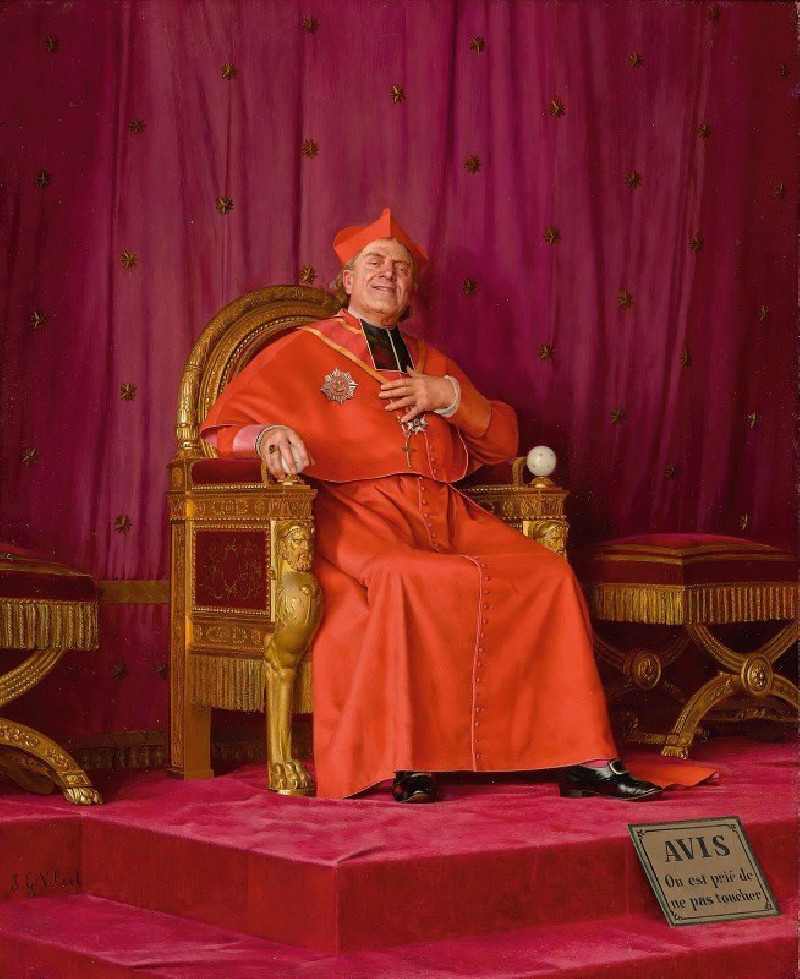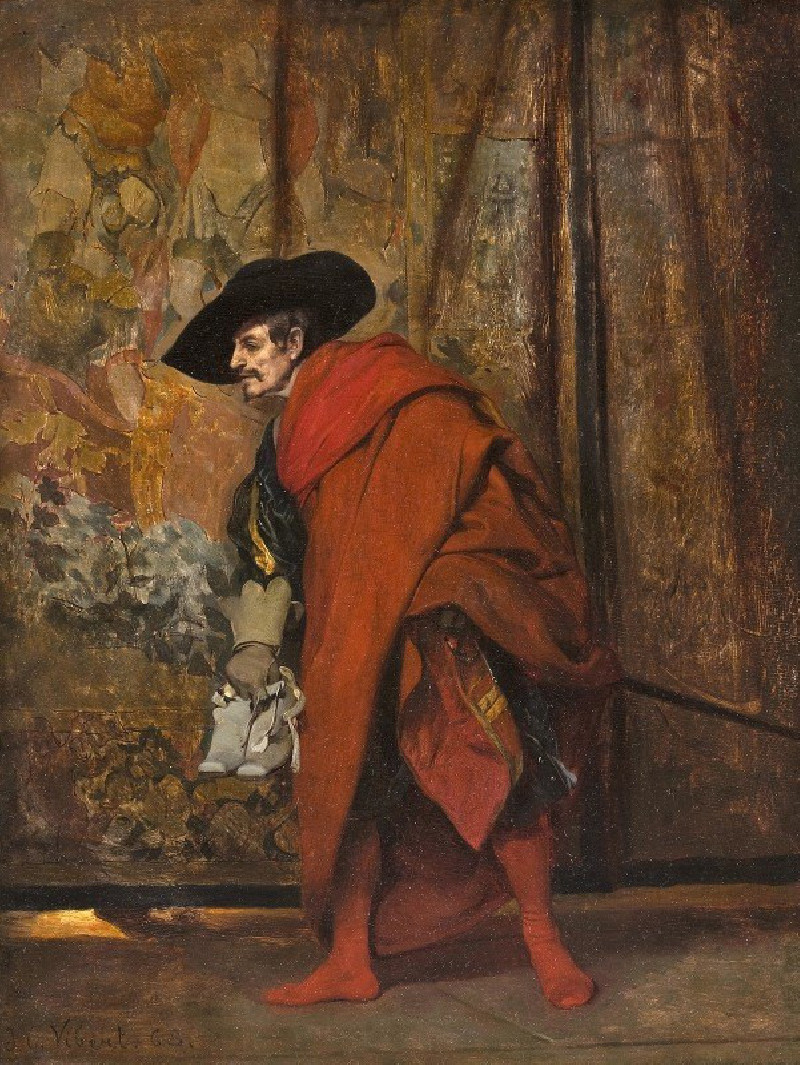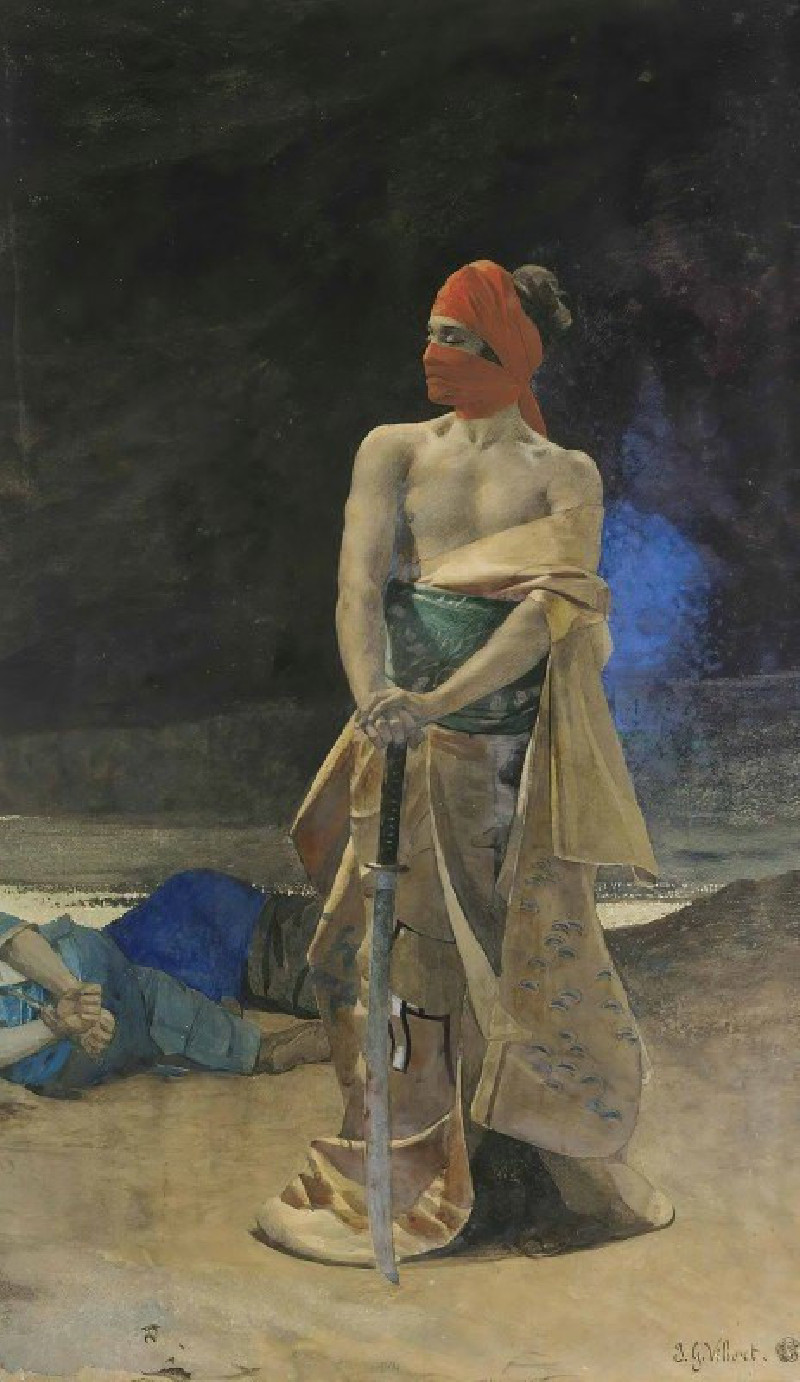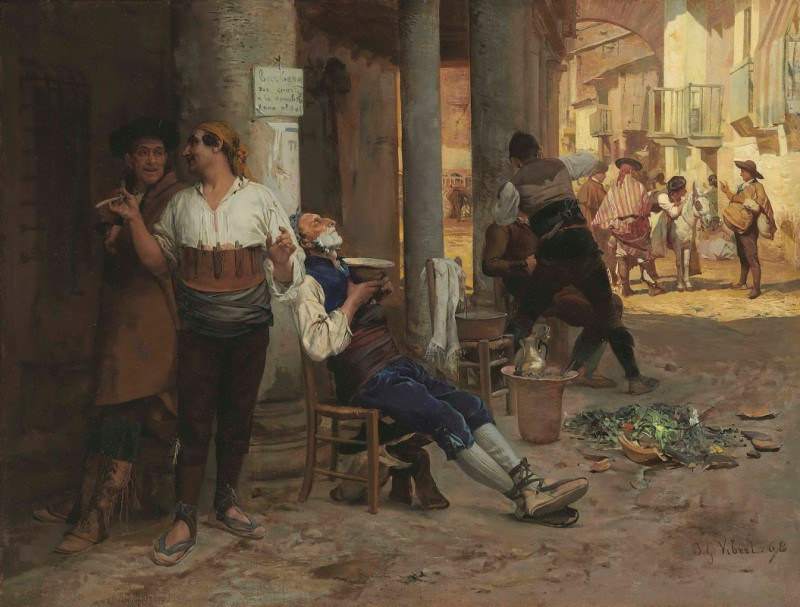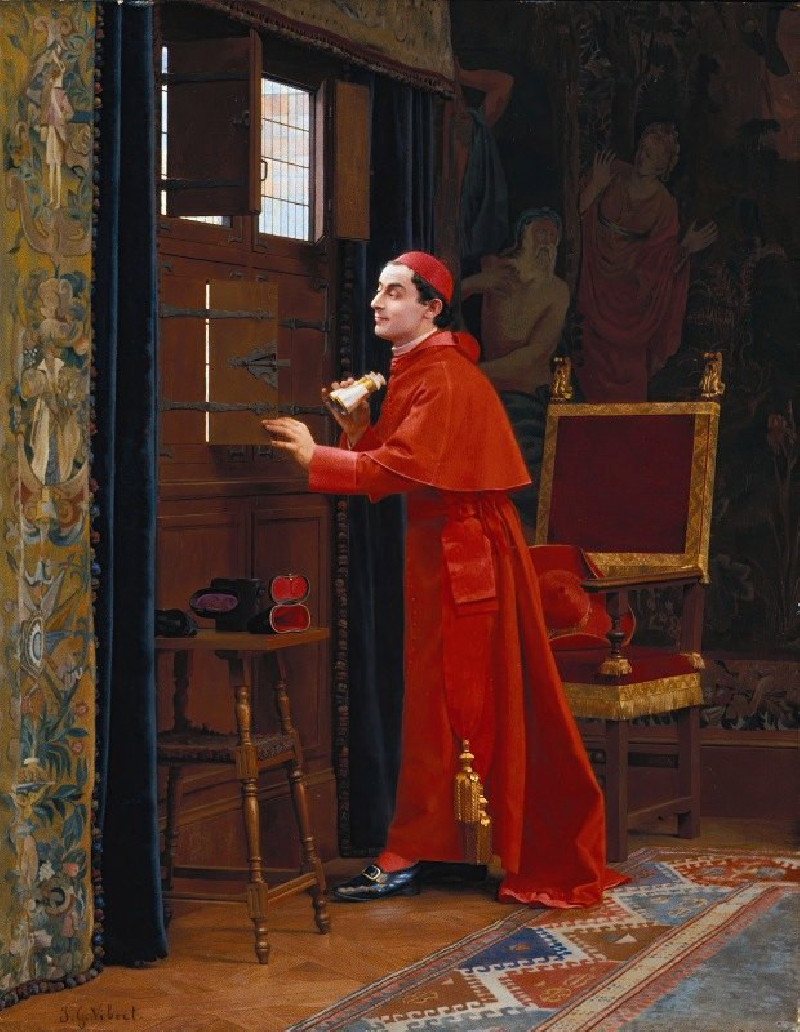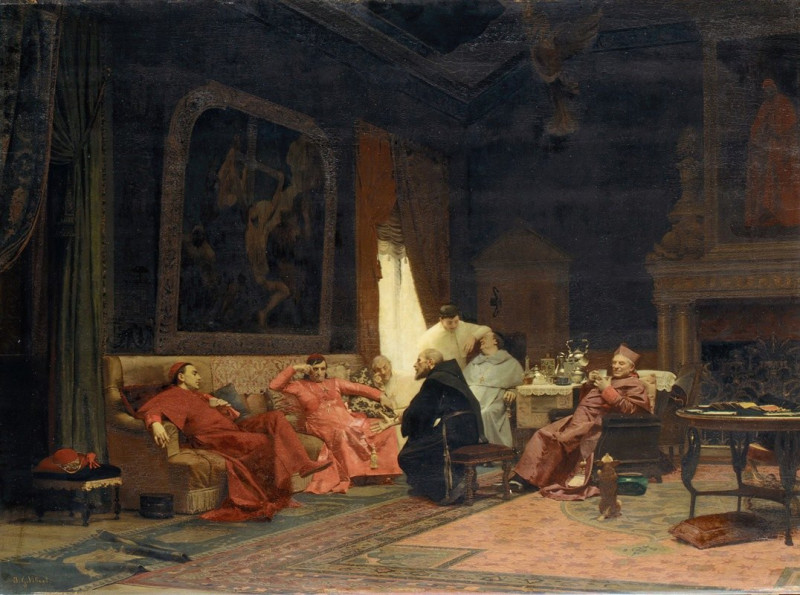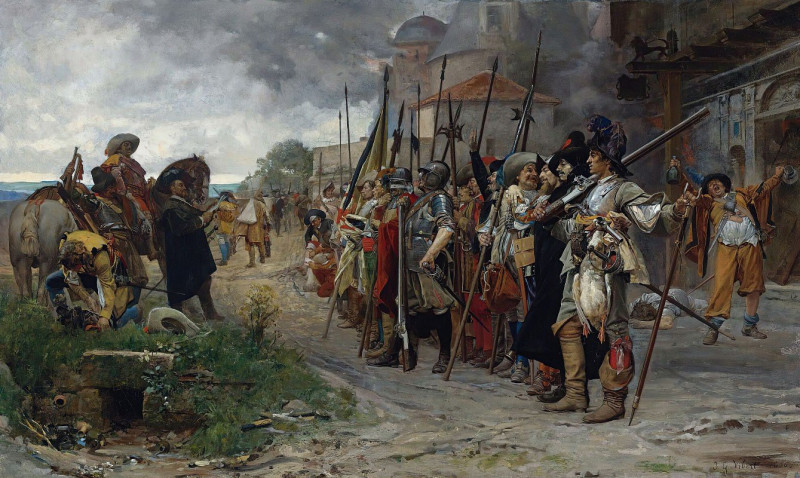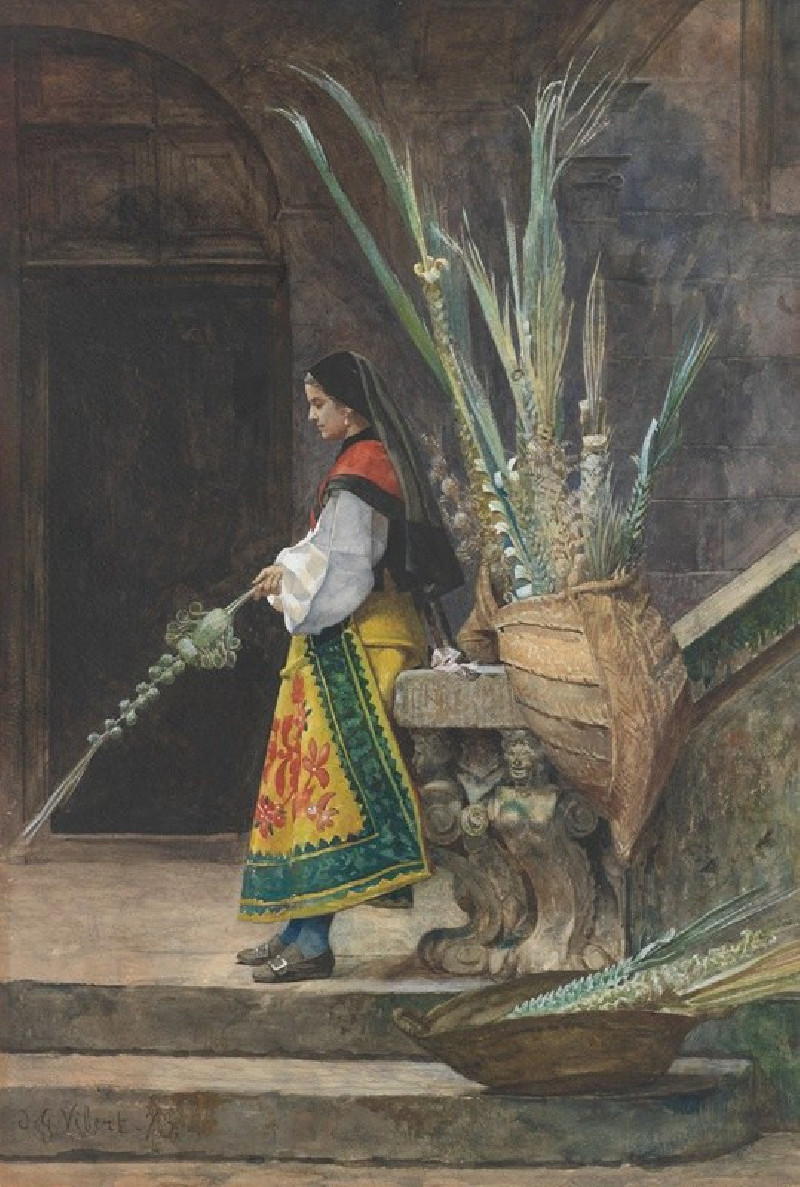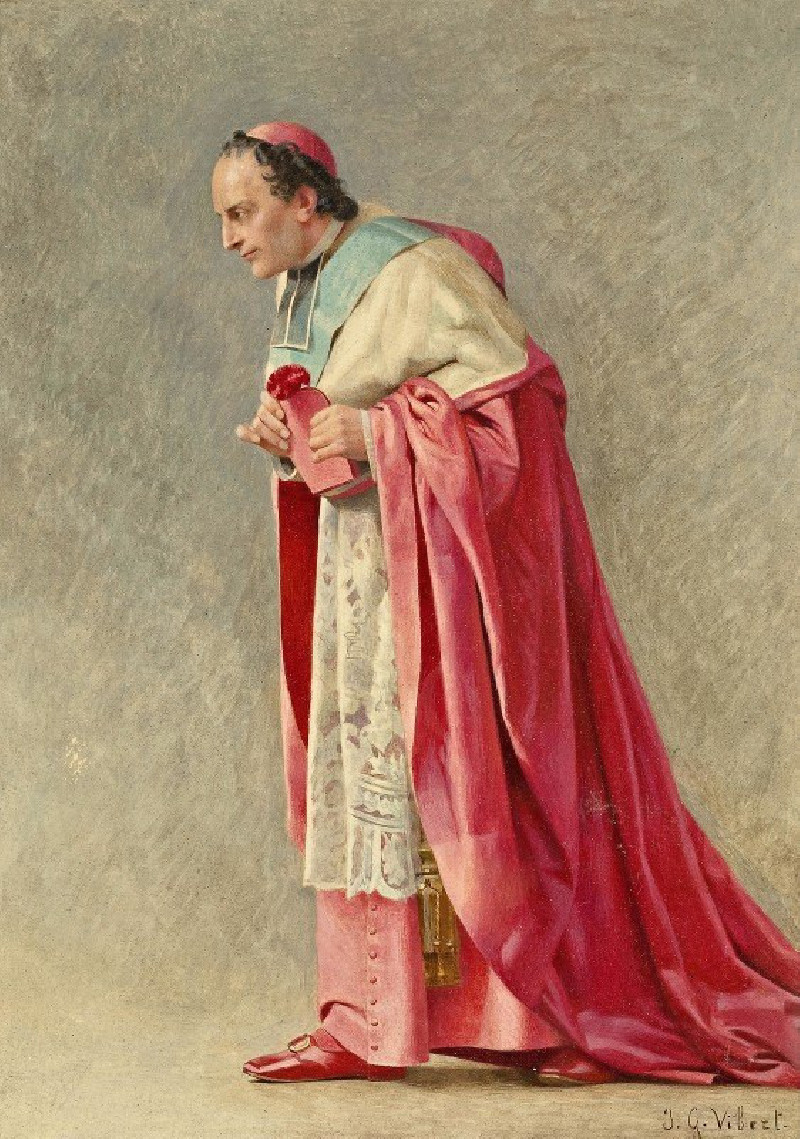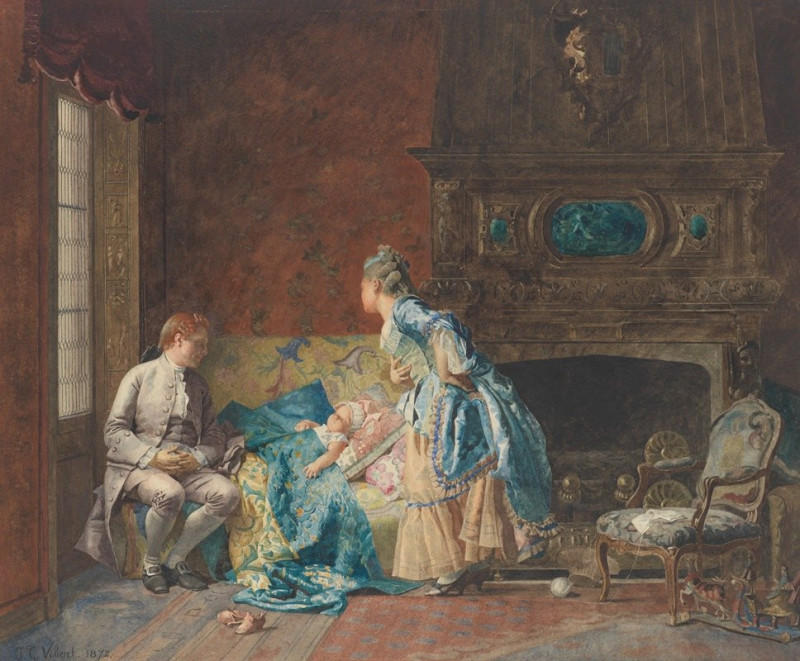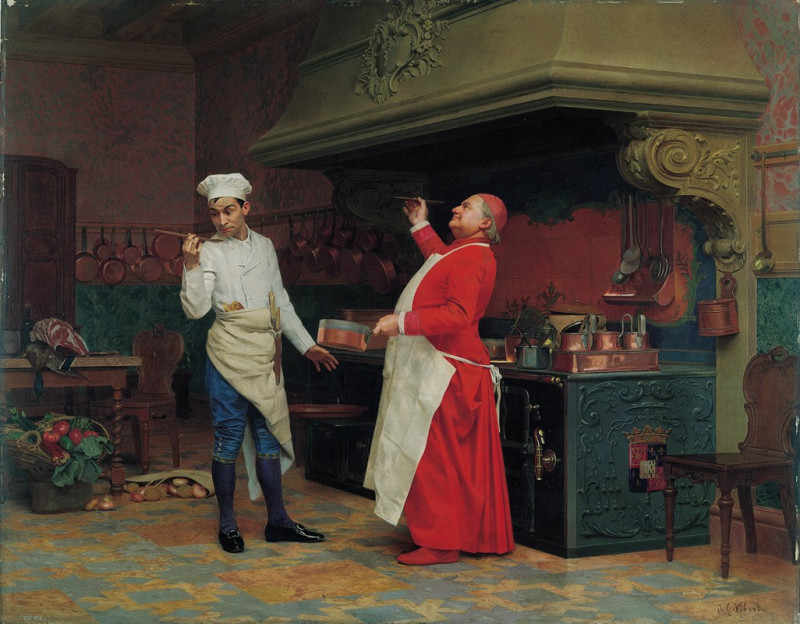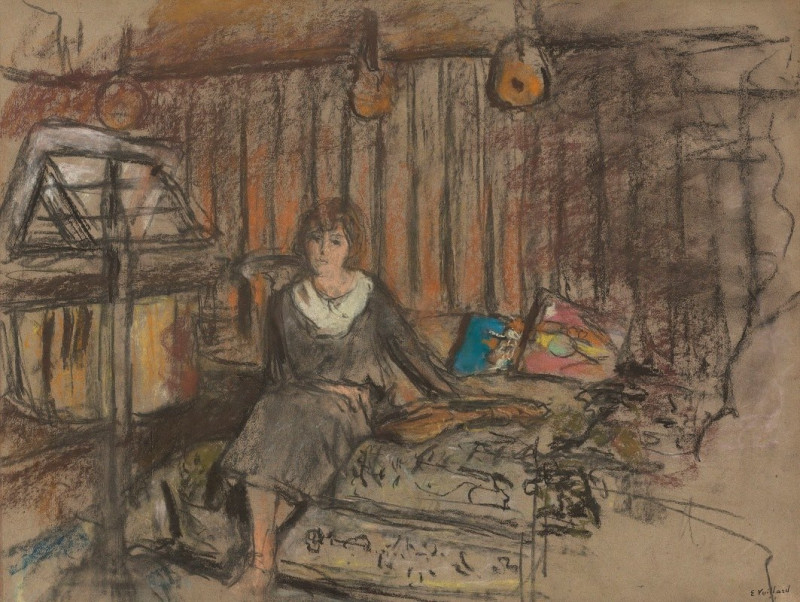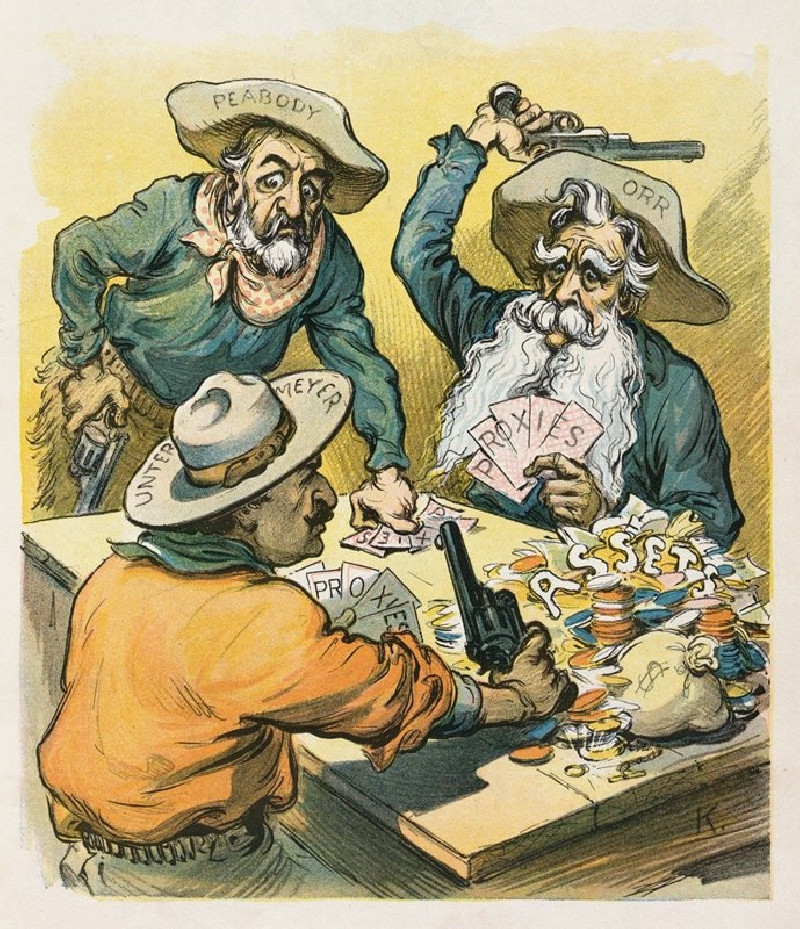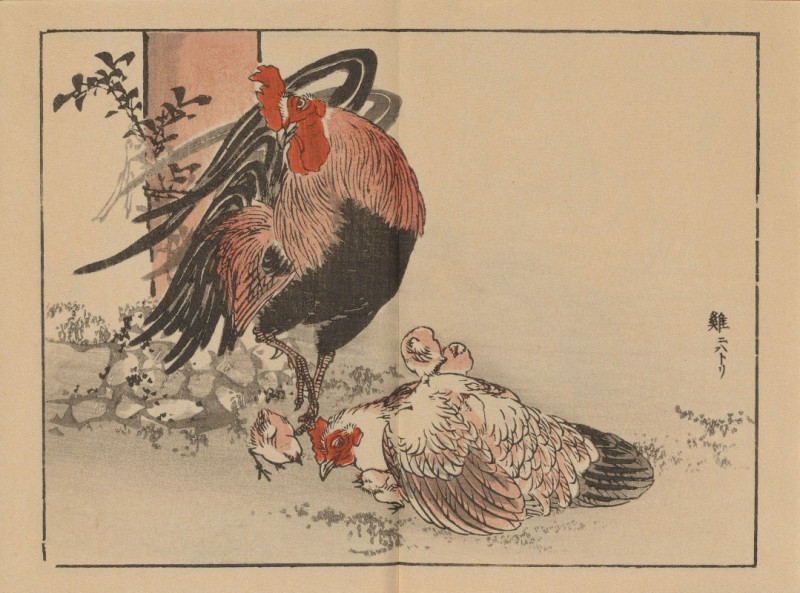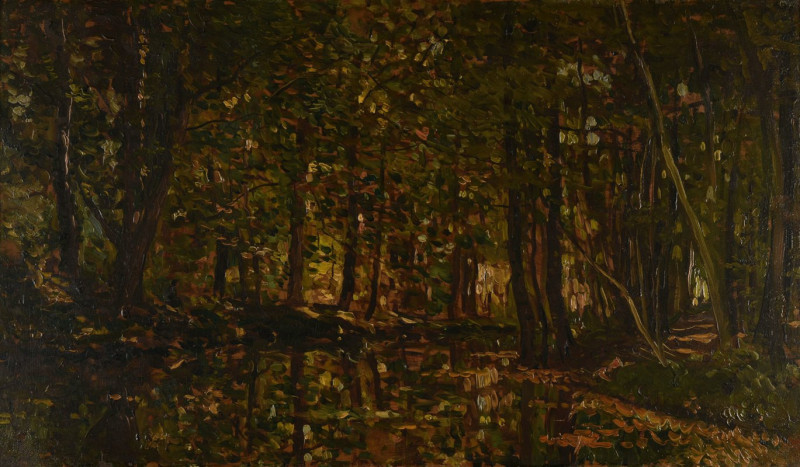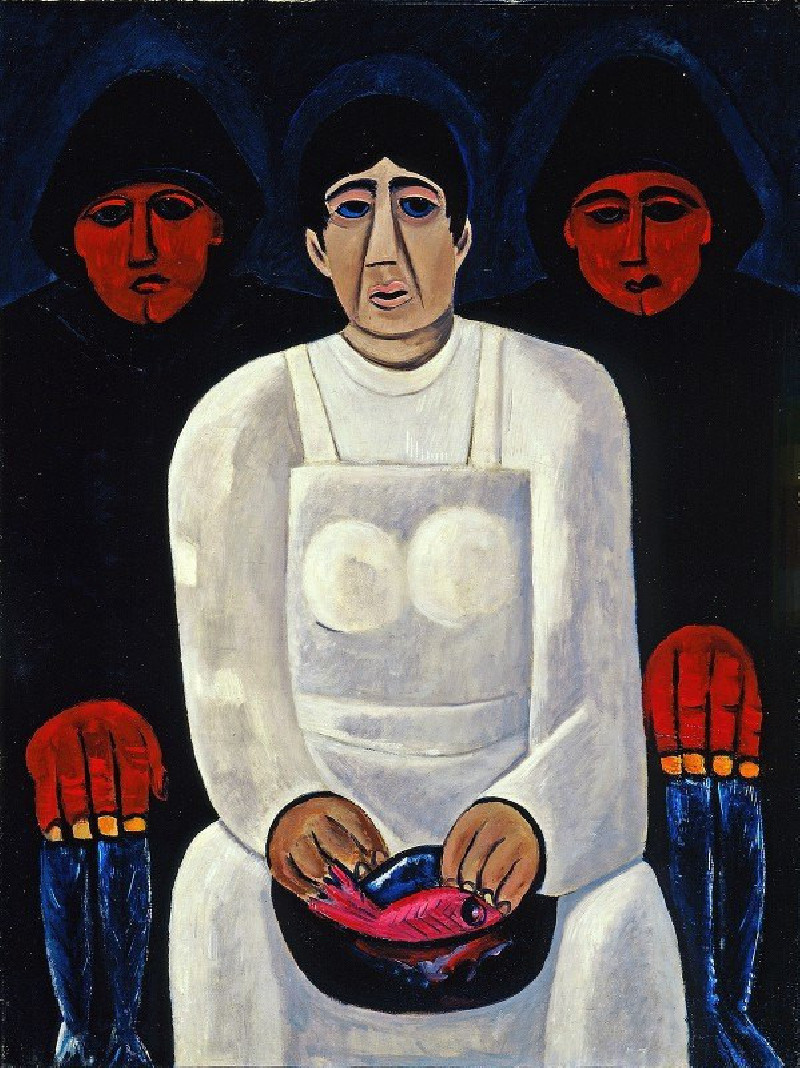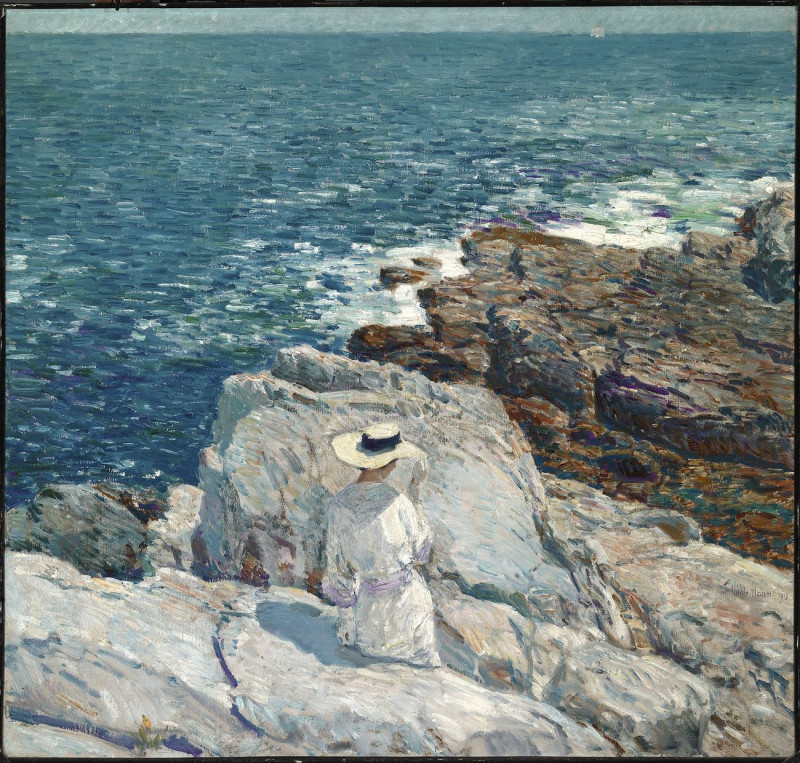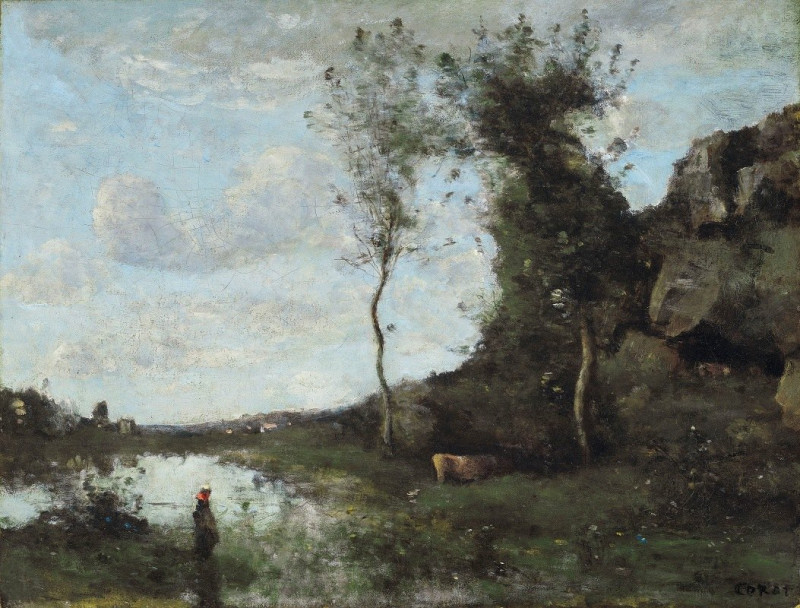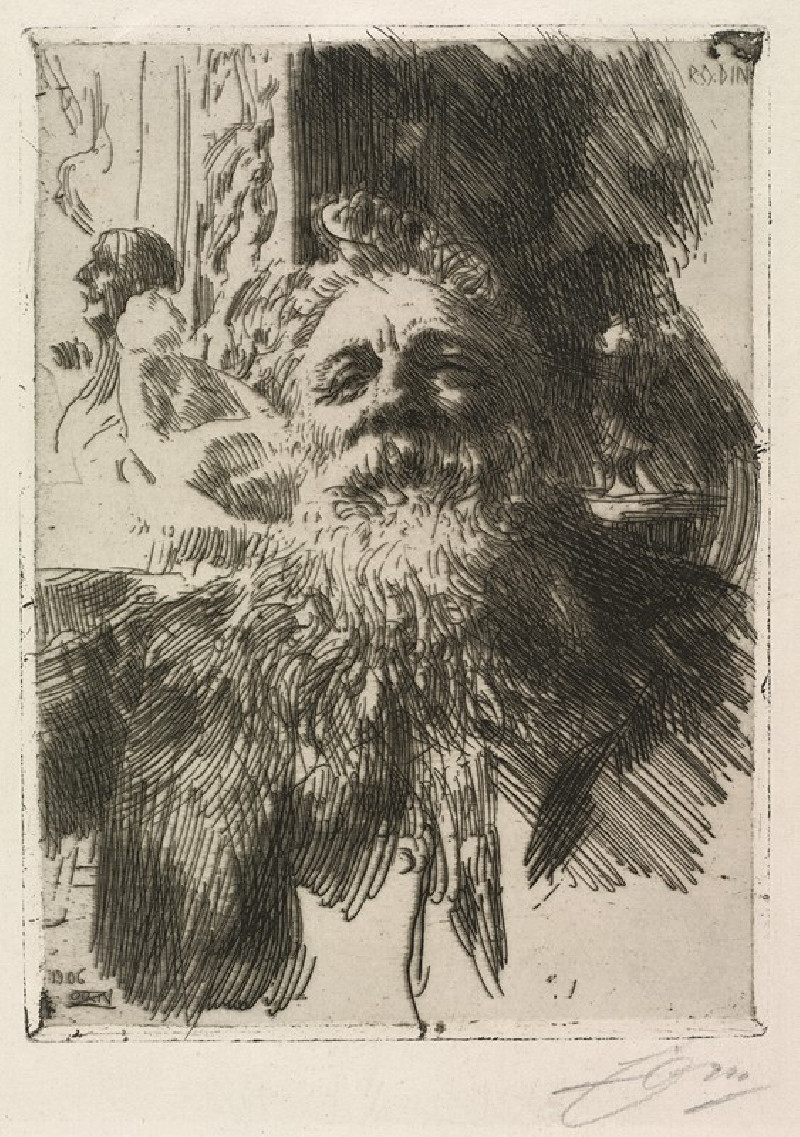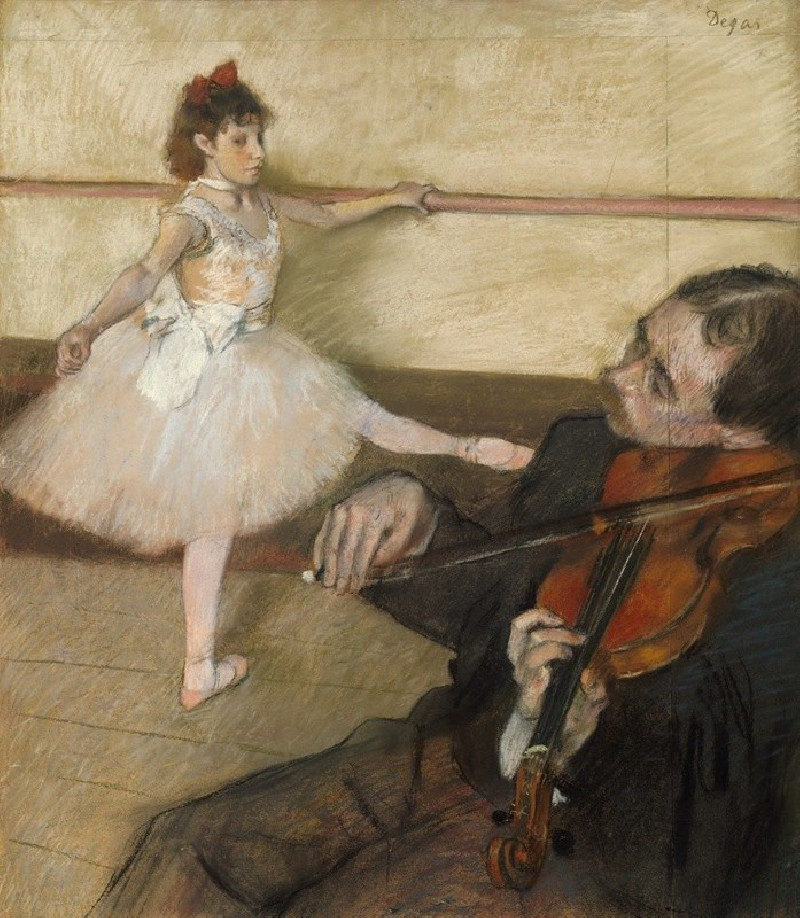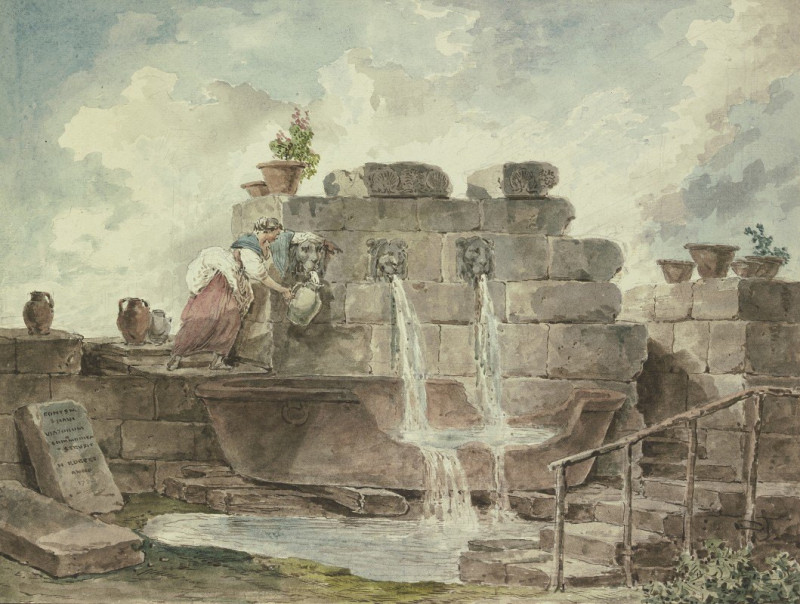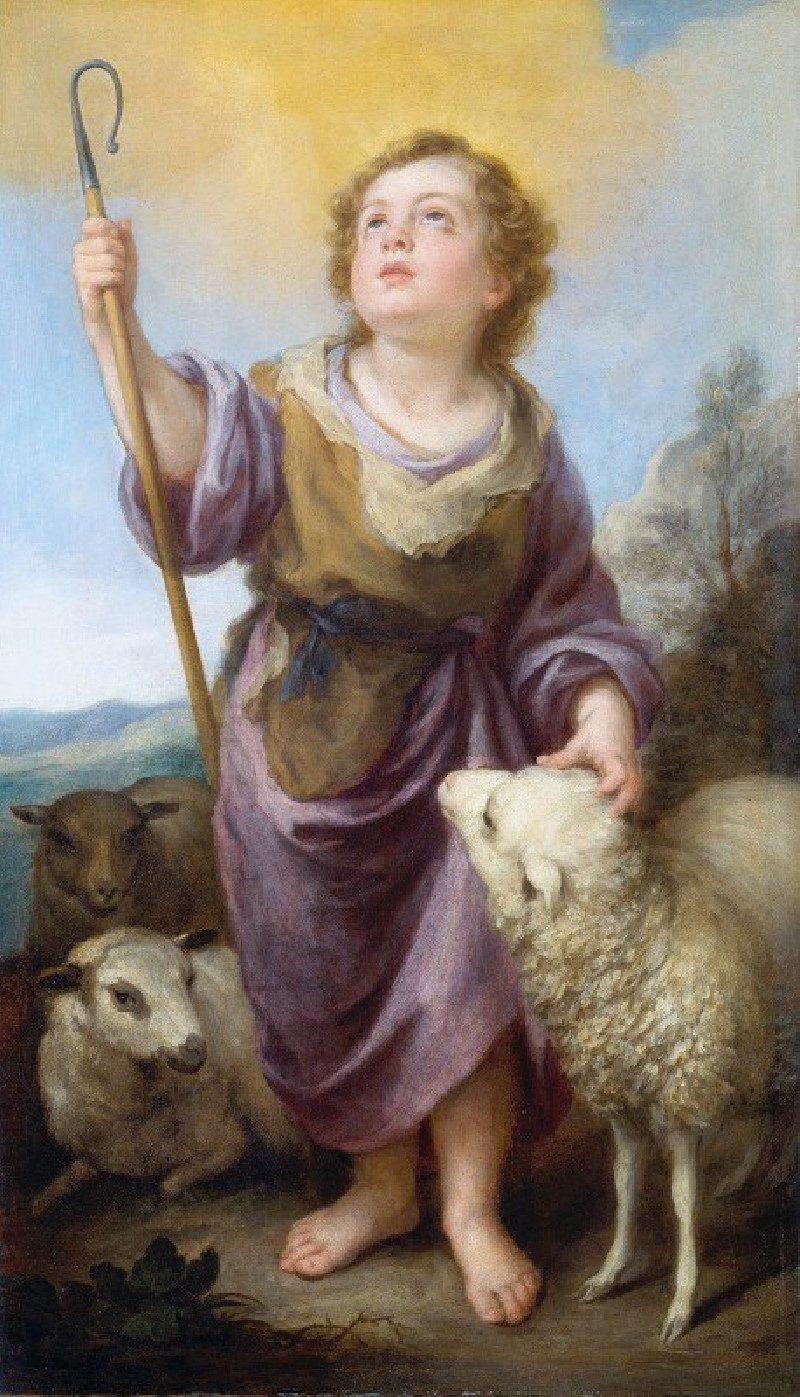La Comparaison
Technique: Giclée quality print
Recommended by our customers
More about this artwork
"La Comparaison" by Jehan Georges Vibert is a captivating work of art that skillfully illustrates the artist’s penchant for satire, particularly when portraying clerical figures. This painting showcases a cardinal in a luxuriously decorated room, deeply engaged in a comparison between his own facial features, using a hand-held mirror, and those of a classical bust, presumably of an ancient philosopher or statesman.The cardinal stands in his full red regalia, a symbol of his high ecclesiastical status, holding a small, oval mirror delicately between his fingers. He seems to be critically assessing his own nose against that of the stone bust before him, possibly searching for a reflection of wisdom or nobility similar to the carved figure. The presence of another portrait hanging to his right—a somewhat stern-looking military man—adds another layer to the theme of personal and philosophical introspection.The room is richly detailed, suggesting the cardinal’s wealth and sophisticated taste. From the intricately patterned wallpaper and the lush, heavy carpets to the finely crafted furniture and decorative items, each element underscores a world of privilege and power. The contrast between spiritual obligations and worldly vanities forms a subtle commentary, typical of Vibert’s critical view of the clergy’s moral contradictions."La Comparaison" is not only a celebration of artistic skill and historical design but also an invitation to ponder the complexities of character and the often ironic human conditions.
Delivery
Returns
Jehan Georges Vibert or Jean Georges Vibert was a French academic painter.
He was born in Paris, the son of engraver and publisher Théodore Vibert, and grandson of the influential rose-breeder Jean-Pierre Vibert. He began his artistic training at a young age under the instruction of his maternal grandfather, engraver Jean-Pierre-Marie Jazet. Vibert was more interested in painting than engraving and entered the studio of Félix-Joseph Barrias and eventually the École des Beaux-Arts when he was sixteen. He remained at the École for six years under the instruction of historic painter François-Edouard Picot.


